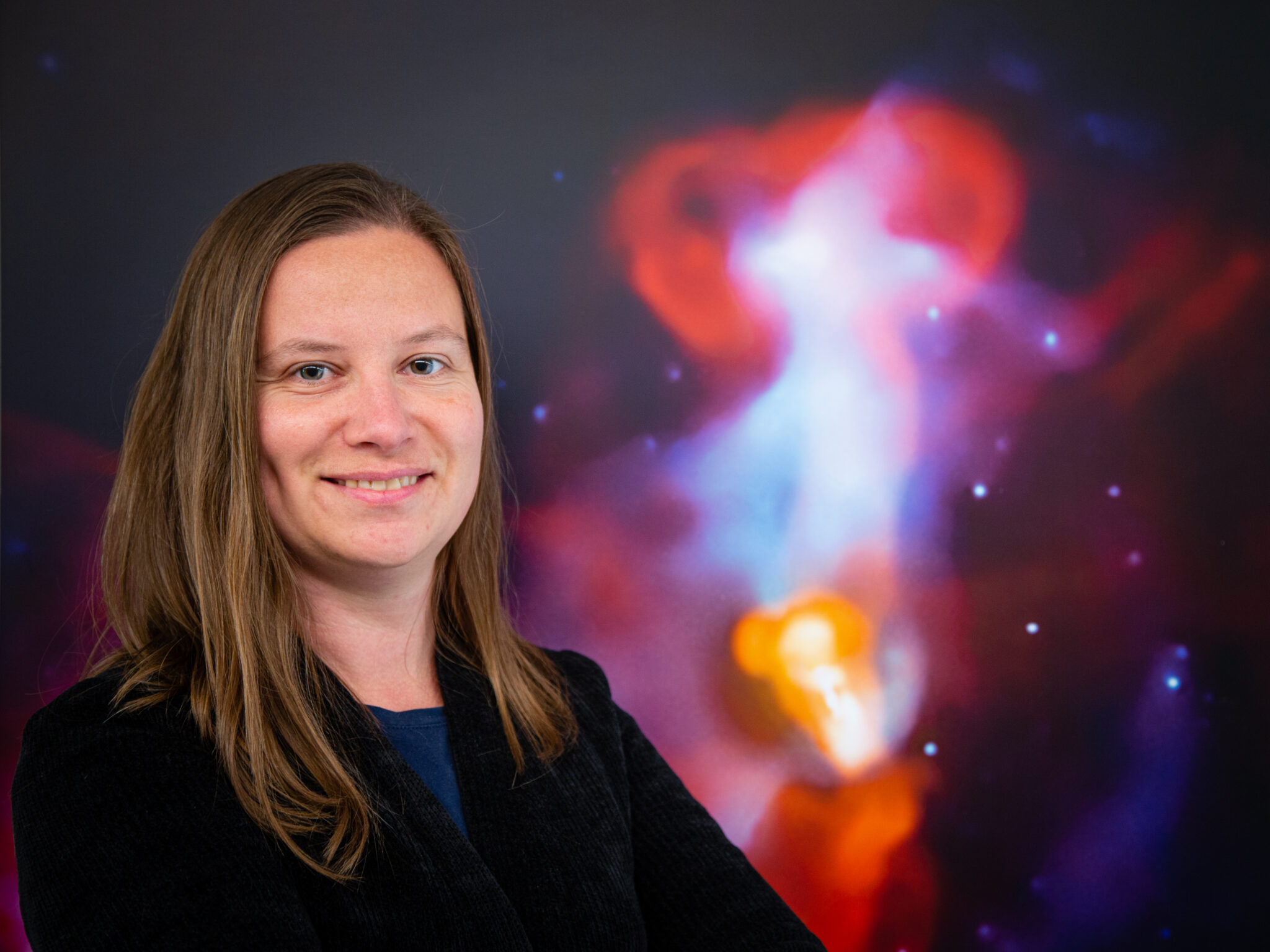
Date.
- Can you briefly present yourself, and your work in general?
I am a “high-energy” astrophysicist, both in the sense that I have almost 15 years of experience conducting research primarily based on X-ray spectroscopy, but also in the sense that I am passionately dynamic in my work and my life in general.
I am currently a tenured staff member at SRON in Leiden, the Netherlands, and my science focus is mostly on the extremely tenuous, hot gas that lies within, surrounding, and especially between galaxies. I am fascinated by the idea that the very basic building blocks of life, like carbon and oxygen atoms, can flow from one galaxy to another through the “veins” of the large-scale cosmic web – and that we can build telescopes able to map that process!
I enjoy building bridges between astrophysics research, technology related to new space missions, and the general public, as well as between cultures. I have lived in four countries on three different continents so far and find great value in being a part of large international collaborations.
- Can you tell us about your career as an astrophysicist?
I actually began my astrophysics career with a project based on computer simulations of the Universe’s large scale structure, performed when I was an undergraduate student in Bremen, Germany. I quickly realized that I was more excited about real data, though. So, for my PhD research at the Max Planck Institute for Extraterrestrial Physics in Garching (also Germany), I worked mainly with XMM-Newton observations of nearby clusters of galaxies, mapping their thermodynamics and chemical composition using X-ray spectral imaging.
I was then offered NASA’s Einstein postdoctoral fellowship which allowed me to move to Stanford University. Here, I focused more on the outer edges of galaxy clusters and their connection to the cosmic web, using the Suzaku telescope. This started a longer collaboration with JAXA and as a result I was offered their “International Top Young Fellowship” and moved to Tokyo. I joined the Astro-H/Hitomi collaboration and played an active role in planning the science program for the early (performance verification) phase of that mission. I think this marked the beginning of my transition from being a pure astronomer to more of a liaison between scientists and instrument engineers – a role which I really enjoy.
After Hitomi’s brilliant but far too short life on orbit, I decided to leave JAXA and move back to my “home continent”. I joined SRON through the “Women in Science Excel” fellowship of the Dutch Research Council, and became a member of the X-IFU Science Advisory Team (X-SAT) almost at the same time as starting my new job in the Netherlands – and I have been an active part of the X-IFU Consortium and the Athena community ever since!
- You’ve just been appointed co-Principal Investigator for the NewAthena X-IFU project. What does this mean, and how are you approaching this new role?
The co-PI role for the NewAthena X-IFU is certainly both an opportunity and a challenge. It’s an opportunity to help pave the path for the future generation of high-energy astrophysics researchers, enabling them to make amazing discoveries. It’s an opportunity for me to get to know better all the talented members of our consortium, and to continue to foster the team spirit that we already share, building upon and learning from the legacy of many people who have contributed to the success of this project up until now. It’s an opportunity to represent our core values and priorities to external stakeholders, and keep up the fight for making the X-IFU a reality.
Large space-based projects are never for the faint of heart. Athena has already overcome some hurdles successfully in the last years, and there may be more challenges that lie ahead. I plan to approach these by seeking the right balance between strength and flexibility to reach the best solutions. Moreover, beyond aiming to have the best X-IFU detector we can possibly build, I hope to leverage the complementarities between the different instruments, ensuring that NewAthena is more than the sum of its parts.
- What are your views on the role of the NewAthena X-IFU in our future understanding of the universe and in making groundbreaking scientific discoveries?
Looking at the X-ray Universe through the eyes of the X-IFU will be much like switching from black and white prints to colour TV: a picture may be worth a thousand words, but high spectral resolution imaging is worth (literally) a thousand pictures. Not only this, but sensitive time-domain information will also add a new layer to the way we record some of the most energetic and dynamical corners of our Universe, from stellar flares and explosions to the vicinity of supermassive black holes.
More than this, I think we should view the X-IFU as not ‘just’ an important tool for the next generation of X-ray astronomers; its novel measurements have the potential to transform many areas of multiwavelength, multimessenger, multidisciplinary research, and we should encourage collaborations to maximise that impact across the broadest possible community. Of course, though, I am most excited about the unknown: every major leap in our observing capabilities in the past has led to unexpected discoveries, and I hope nature will not fail to surprise us also this time around.


 Youtube
Youtube